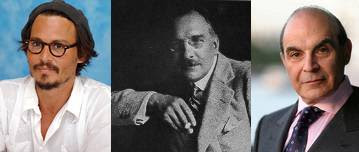As a cipher mystery writer, I’ve been thinking about the Codex Seraphinianus for many years. And there’s a 2013 edition coming out right about now (allegedly the 3000-strong American first print re-run was fully pre-ordered).
What kind of a thing is it? It certainly resembles a cipher, with all the structure and nuances of calligraphy and page layout, though with the page numbering scheme the least confounding part (this turned out to be a contorted base-21 with a whole load of special rules to mess with your head). For what it’s worth, Luigi Serafini has claimed in several interviews that the text has no meaning, though curiously pretty much nobody believes he’s telling the truth. My own belief is that the text was for him probably an intellectual exercise in calligraphic and linguistic evolution, i.e. that he began with a simple personal expressive form for the text but allowed it to evolve multiple times into something that could ultimately make sense only to him. For what is more truly alien than the intensely private?
All the same, it has to be said that if the Codex were just words, however beautifully conceived and drawn, pretty much nobody would give a monkeys about it (now there’s a marketing lesson for asemic authors such as Michael Jacobson). And so it is that, in the same way that the Voynich Manuscript (which I don’t personally believe inspired Serafini even slightly) is elevated by its unworldly plant drawings, odd circular diagrams and naked nymphs into something on a genuinely higher plateau of mystery, so too does the Codex Seraphinianus manage to transcend its mere textual oddity by dint of its genuinely odd drawings.
To my eyes, Serafini’s diagrams merge the ligne claire quality of Hergé with the visual narrative of tightly-illustrated Japanese car manuals. They smell simultaneously didactic and nostalgic, an extended PDF sent to us from conceptually afar (“Contact”-style) by a dying exoplanet recalling its triumphalist heydays: 1960s America lecturing far-distant Neanderthals about How You Too can live it large in Bedrock by using The Latest Technology.
Much-admired though his surrealism is, I personally find it hard to avoid the feeling that it is almost an afterthought compared to the dominance that style and layout has over the book: these speak far more loudly of the victory of the coldly formal over the uncontrollable heat of humanity. In the end, his Codex falls perilously close to a long-winded exercise in carefully-parodied self-expression, the kind of joke where nobody’s smiling or laughing, an encyclopaedia of meticulous diagrams of rubber chicken gags.
Kudos to the man for his marketing efforts, though, for not many re-releases of old books warrant mainstream articles in Wired (including photos of Serafini), Slate and even Dangerous Minds [a big tip of the missing Somerton hat to Zodiac Dave Oranchak for passing me the links, much appreciated!]
But… I suppose I’ve well and truly got Serafini’s joke, now, such as it is. So, why did the architect have his house made backwards, exactly?
